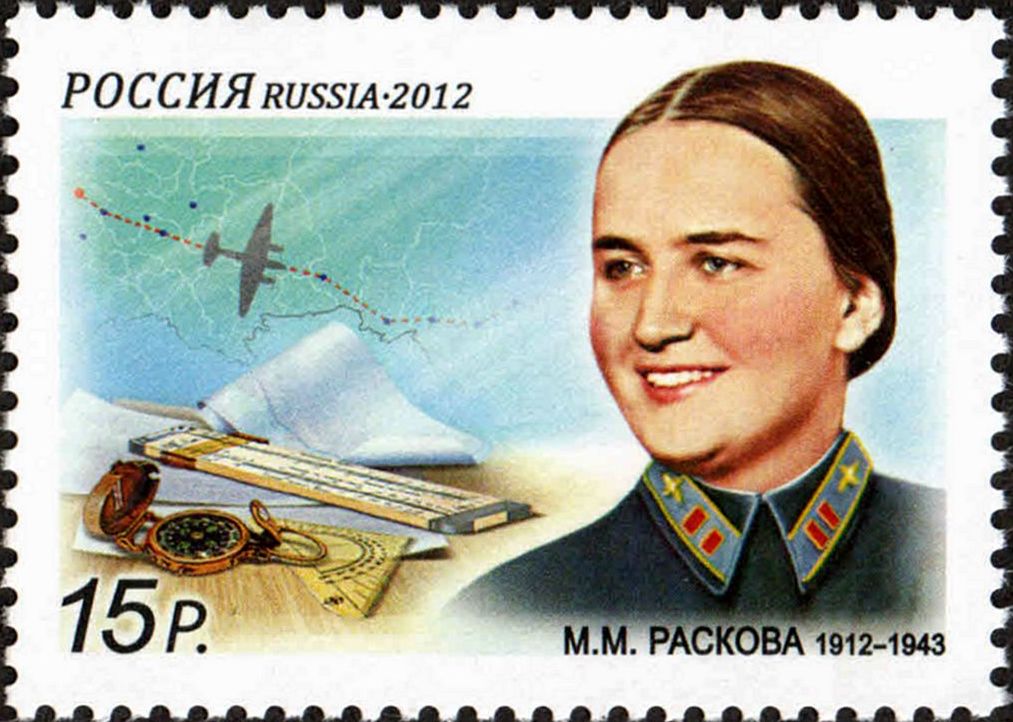Back in the days before GPS and similar systems, navigation was complex and difficult. It was one thing on a ship, which is moving at a reasonable speed, but as airplanes got bigger and capable of longer distances, somebody had to navigate a machine hurtling through an invisible fluid at super-high speed. On March 28, 1912, Marina Raskova (nee Malinin) was born in Moscow, and grew up to be the first female air navigator in the Soviet Union — and possibly the world.
Her father was an opera singer, and as a child she wanted to follow her father’s path and sing Opera. When she was somewhere around ten to thirteen, though, she contracted an ear infection that affected her hearing. She wasn’t deaf, but she could no longer sing well. She quit music entirely, and in high school studied chemistry and engineering. She was pretty good at it, and got a job as a chemist in a dye factory. There she met Sergei Raskov, an engineer, and they got married. The family soon included a daughter, Tanya.
In 1931 she left the dye business for the Aero Navigation Laboratory in the Air Force Academy. She learned to fly and navigate, and became the first navigator in the Soviet Air Force in 1933. Just a year later she started teaching at the Zhukovsky Air Academy — also the first woman to do that. By 1935 she was also a flight instructor, teaching instrumented flying as well as advanced navigation.
As a pilot, Raskova set a number of long distance flying records in the 1930s and was known as the Russian Amilia Earhart. Her most famous flight was a record-setting 4,000 mile flight from Moscow to the far eastern part of Russia. She was the navigator, and there were two other women aviators on the plane. The flight itself took 26 hours, but due to fog at the end of the trip the plane couldn’t find the airport. Raskova was in the navigator’s cockpit, which for some reason was isolated from the rest of the plane — the only way out was to jump. And it was on the belly of the plane, where it was extremely vulnerable in a crash landing. So Raskova jumped, and parachuted down safely. However, the far eastern area of Russia is sparsely populated, and once on the ground Raskova had no idea where the plane had gone, nor where any people might be found. She survived in the wilderness for ten days before finding the plane, where the rest of the crew and a rescue party were waiting. All three women received the Hero of the Soviet Union award — the only women to receive the award prior to World War II.
As a celebrity, Raskova knew Joseph Stalin personally. When World War II began, she talked him into forming the 122nd Aviation Corps — all the pilots were women, and so were the support crews, engineers, etc. There were three regiments, two equipped with bombers and one with fighter aircraft. Raskova herself commanded one of the bomber regiments, and probably used her influence to ensure they were using the latest airplanes rather than old, obsolete ones. She was killed in a crash in 1943, just 30 years of age. She’s memorialized by a street in Moscow, a public square, and several schools. During World War II a Russian ship was named the Marina Raskova. She was depicted on a Soviet postage stamp in 1939 and a Russian stamp in 2012. And her old aviation regiment was renamed the 125th M.M. Raskova Regiment in her honor.

